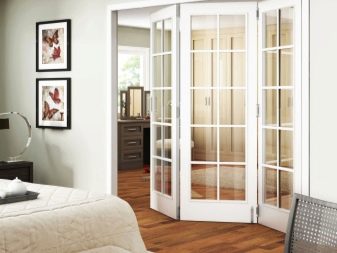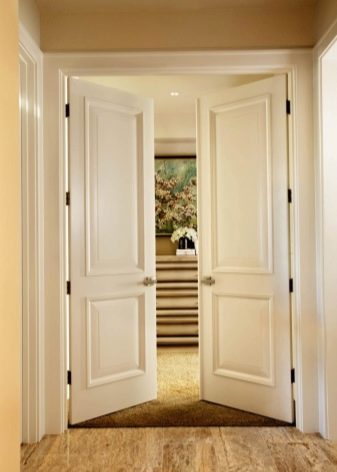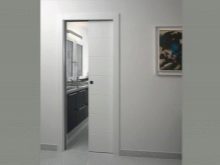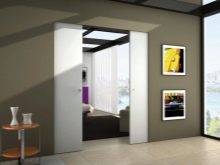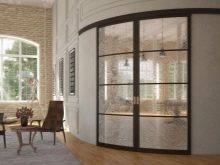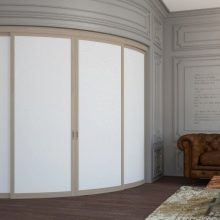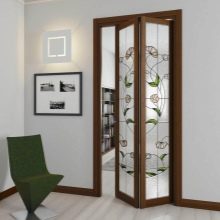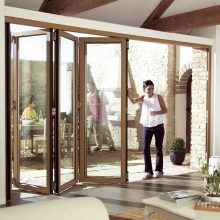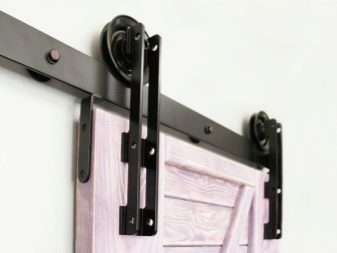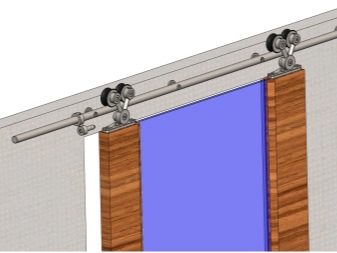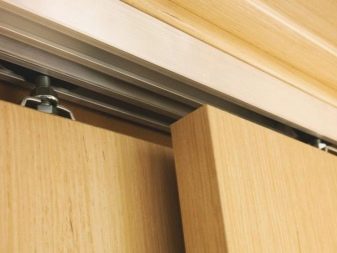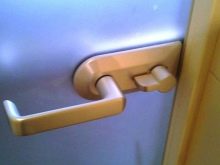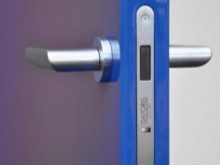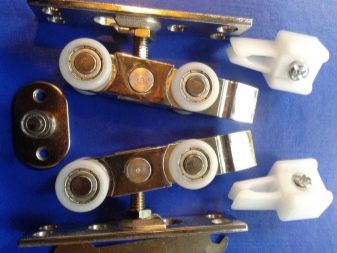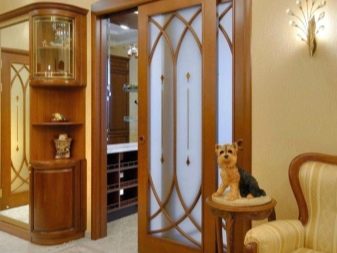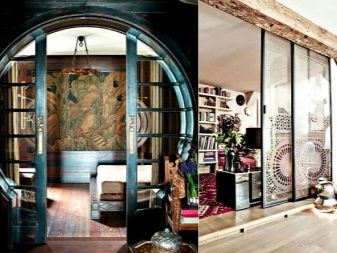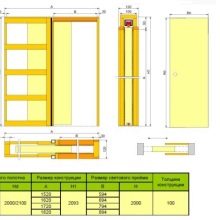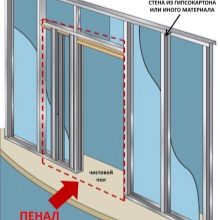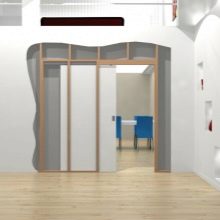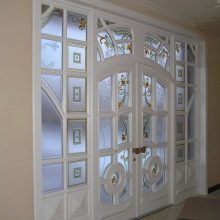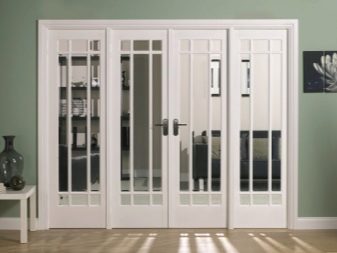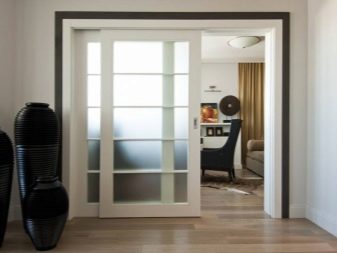Types of sliding doors
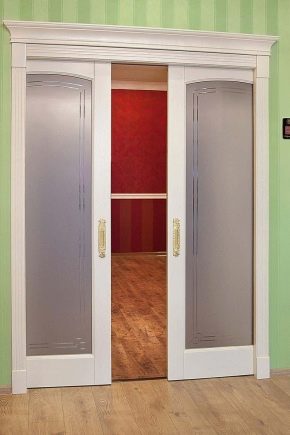
Sliding interior designs are in great demand. The most popular now acquired profile type "case". Penalom is called a special box in which the sliding door itself is hidden.
Designs
Before you decide what mechanism will be used when installing the sliding door, you should decide on the type of construction itself. Manufacturers offer a variety of models, among which you can choose the most appropriate, taking into account the area of the room.
The most popular option are swinging doors. They have long been familiar to everyone and have an extremely simple principle of operation: the door is mounted on hinges and opens in a certain direction.These models appeared a long time ago, but their main drawbacks is that such a design in the open position takes up quite a lot of space.
For this reason, it was precisely the interroom sliding systems of the “pencil” type that became very popular, which in the open state do not interfere with the passage and do not occupy the area of the apartment. Usually distinguish the following types of sliding doors, based on the type of their design: single and double systems, radius and folding.
- Single door is the easiest model. Such systems have one leaf, which, moving along the guides, usually retracts to the right side (the direction of the door movement can be chosen individually).
- Bivalves the profiles-canisters have two flaps, which are opened in both directions according to the elevator principle. The flaps of these two models in the open position are located along the wall or close its part or can go into specially built grooves, if they are provided for by the construction. In this case, it will be a closed-type system that is not allocated in the general environment of the room.
- Doors radius type are perhaps the most creative and innovative for the design of the apartment. The presence of such a profile will give the room a rather refined and non-standard look. Their main feature is, as a rule, a semicircular shape. In this design there are no straight lines, and all angles are smoothed. It is recommended to install a door-case of such a model in rooms with an original interior that can perfectly complement it. The radius profile is also suitable for small rooms, because the absence of right angles will make the room visually more spacious.
- And finally folding type. Open these doors on the principle of "accordion". Sometimes it is also called the "tram" mechanism, as the opening system resembles a design in a tram. This profile consists of panels of the same size (10-15 cm), otherwise opening the door will be problematic. In turn, systems of folding type can be presented in the form of a “book”. That is, the design consists of only two panels, and when opened, such a door folds in half. To save space, folding-type structures are a very suitable option.
By production of doors-cases various materials are used. Pencil systems can also be made of glass.
Types of mechanisms
After the principle of operation of the structure is chosen, it is necessary to pay extreme attention to its sliding mechanism.
They can be divided into the following categories.
- Suspension mechanism is the simplest, and therefore quite reliable. Such a mechanism is able to withstand a large load. It represents only one guide along which polymer rollers move on bearings. As a result, the door opens easily, smoothly and silently.
- Barn type. Typically, this mechanism is used when the interior of the room is made in the style of a loft (when an element of antiquity fits into a modern room) or retro. The design in this case has an old or rustic look, and the mechanisms themselves are not covered by anything. The principle of operation of this design is to move on two large metal rollers.
- Telescopic mechanism used on systems with two or more doors. The mechanism itself is rather complicated and is used much less often than the usual suspended one.The essence of his work is as follows: the doors are suspended on a parallel system of guides and are connected by a special system of synchronizers, that is, when one door sash is opened, the second one opens automatically. The same principle of operation implies a synchronous mechanism.
Types of locking mechanism
We should also consider the locking mechanism of sliding doors. It is necessary to pay attention to the material from which it is made, as well as to some types of locking mechanisms.
In frequency, they can be represented by the following types.
- Harpoon mechanism. It is mainly installed on single-leaf, and more rarely on double-wing structures, the flaps of which move to the wall. The mechanism itself is fixed on the door, and the reciprocal plate is attached to the wall. When the door closes, the tongue of the mechanism enters the opening of the slat, thereby the flaps do not move.
- Push-button mechanism. Such a model is mounted, as a rule, only on double doors. Also, the option of a push-button mechanism is well suited for mirrored or glass doors. In this mechanism there is a special rod, which rests against the second door and does not allow it to open.
- Magnetic mechanism. The main advantage of this mechanism is its small size.In this case, the fixation of the door is ensured by the magnet. However, when choosing a locking mechanism, it is worth remembering that a magnet has a tendency to demagnetize quickly, especially if the weight of the structure is not taken into account, and the magnet has too much load.
Ways to open the case door are listed below.
- Mechanical. The most common and easiest option. The door opens in this case with the application of force to it.
- Auto. Requires an electrical connection or can sometimes run on battery power. The principle of operation of this method consists in reacting to an object approaching the door and automatically activating the opening mechanism. This type of opening designs is often found in large supermarkets and offices.
It is necessary to allocate a number of major components that are included in the foam system.
- Door leaf;
- Penal sliding system;
- Mechanical latches and motion stops;
- Accessories (includes a set of wheels and door handles);
- Cassette.
Advantages and disadvantages
Reviews of buyers who purchased the door-case, as a rule, the most positive.
The following advantages of a sliding type system were noted.
- Significant savings in indoor space;
- Lack of door threshold;
- The door does not close itself and does not slam into drafts;
- No noise when opening.
Some cons of the sliding construction were highlighted.
- More difficult installation of a sliding door;
- More expensive installation;
- Low noise insulation (if you choose the system of the correct thickness, then this disadvantage can be avoided; you can also choose a special gasket from felt);
- Retractable rollers may deteriorate over time, so you should pay particular attention to the sliding mechanism when choosing or have a set of spare rollers.
It is obvious that the advantages of sliding case doors more than compensate for their disadvantages.
Some recommendations for the care of the door-pencil case
To ensure that the sliding door lasts a long time and does not cause inconvenience in its operation, it is necessary to take into account a set of rules for the care of the system.
- Avoid high humidity in the room, as the door material may be deformed from it;
- Avoid debris in the guides and sliding mechanism;
- Periodically clean the sliding structure with a vacuum cleaner;
- Watch out for sliding mechanism wear.
If you follow the installation recommendations, the foam system will work flawlessly and will last a long time.
Tips for installing a door-case can be formulated as follows.
- To install the sliding structure, the wall must be level. This will ensure the correct operation of the sliding door and will avoid misalignment.
- Each sliding system is accompanied by a scheme for its installation, which needs to be followed precisely during self-assembly.
- At the initial stage, it is especially important to make accurate measurements for the future design. When calculating the length of the guide bar, it is worth remembering that it should be equal to twice the width of the doorway.
- It is necessary to accurately calculate the width of the case. If the cassette is narrow, it will constantly interfere with the smooth opening of the door.
- The space between the door and the floor should not exceed 5 mm, otherwise the sound insulation will decrease. Incorrect measurements are the most common mistake when installing sliding systems.
- It is necessary to take into account the lifting capacity of the sliding mechanism, since the door leaves have different weights, and the mechanism must be selected individually for each.
- Door-case should be installed on the already finished floor and made the wall.
- If the structure is installed to the supporting wall, then a frame is fastened to it, which is sheathed with plasterboard. When finished, putty is applied over it, paint or wallpaper is glued.
- After installing the door-case, the following materials are usually used for its finishing: plasterboard, plywood, plaster.
Sliding interroom door type "case" is an excellent choice for owners of small apartments, because with this system you can save a large amount of usable space. An important aspect when choosing a door-case is a sliding mechanism. Penal designs look creative and give the room a certain style. The main requirement is to correctly and accurately install the sliding system and carefully monitor its careful operation.
How to install the door-case, you can see in the next video.
